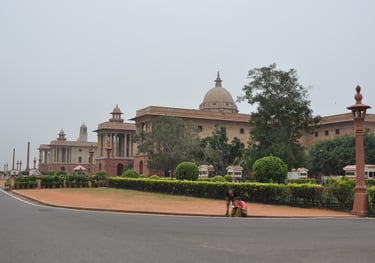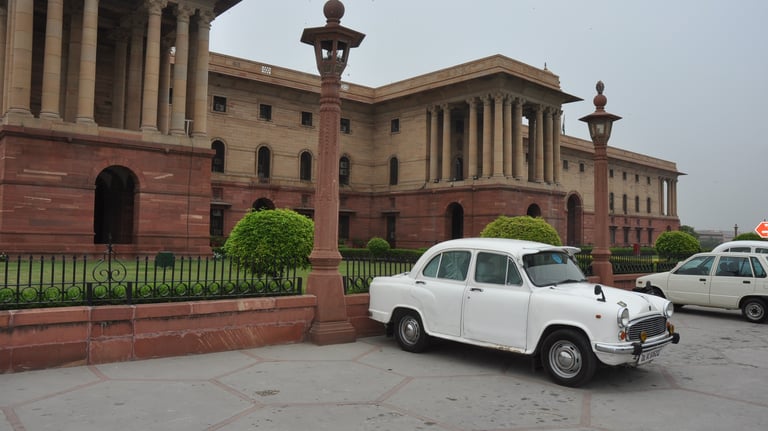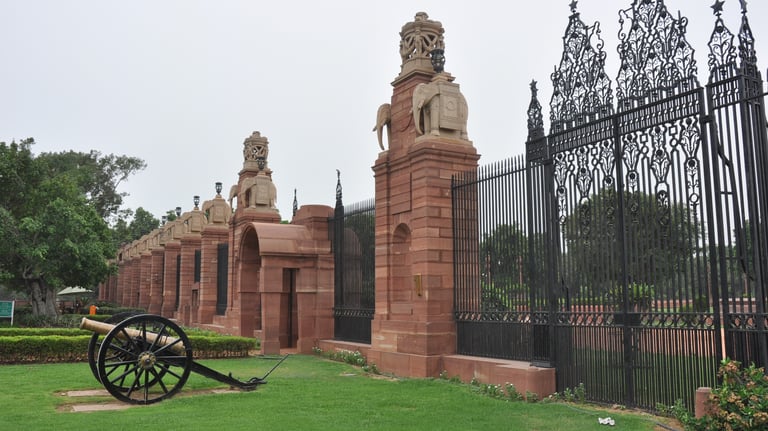
New Delhi
Delhi, the capital of India and the second most populated city in the world, home to over 28 million people has to have its own page and quite rightly so. We have been to Delhi many times and each time this leviathan of a city never seems to be the same. The moment you set foot from your international flight Delhi hits you in the face with the force of the willow from a well swung cricket bat! The sounds, the smells, the colour and the crowds to some can become completely overwhelming, with the whole of human life bustling around you, the rich, the poor, beggars and lepers all share the same space whilst the earthly embodiment of Brahman, mother Earth, the cow scrapes out a life amongst the mayhem.
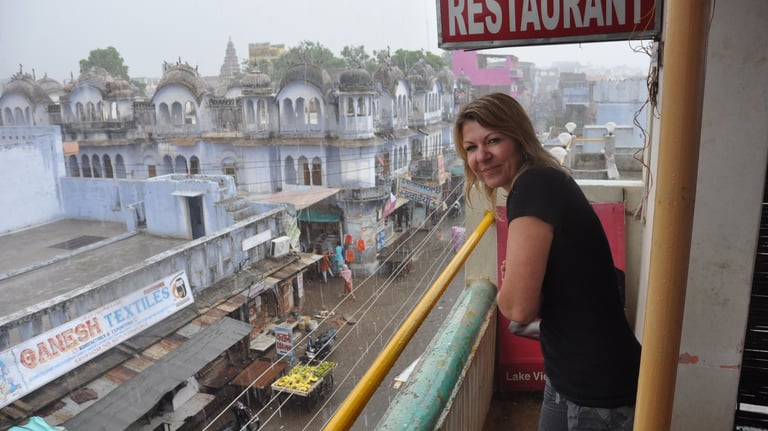




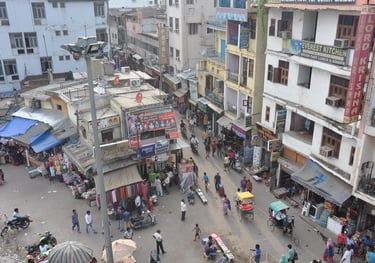
Each time we have been to Delhi, we seem to have been drawn to the Main Bazar Road, the road that runs opposite the main New Delhi railway station. This area is filled with a mixture of cheap hotels, restaurants and a myriad of small enterprise shops that sell all manner of goods from traditional Indian fabrics, through souvenirs to the obvious designer fakes. This area hums with life, its busy, dirty and noisy and accompanied by the mellow rotten smell that follows you pretty much everywhere in the city and you can almost become trapped within its ordered chaos if you are not too careful. Also a short walk from here is is an area known as Connaught Place where you can find a multitude of travel agents (along with the ones on the Bazar Road) that will organise you pretty much any trip you want to take in India whether it be a single train ride or a two week tour of the golden triangle, and actually having used these operators a couple of times before, they work out really good value for money and save you the endless queueing each time you want to catch a train.
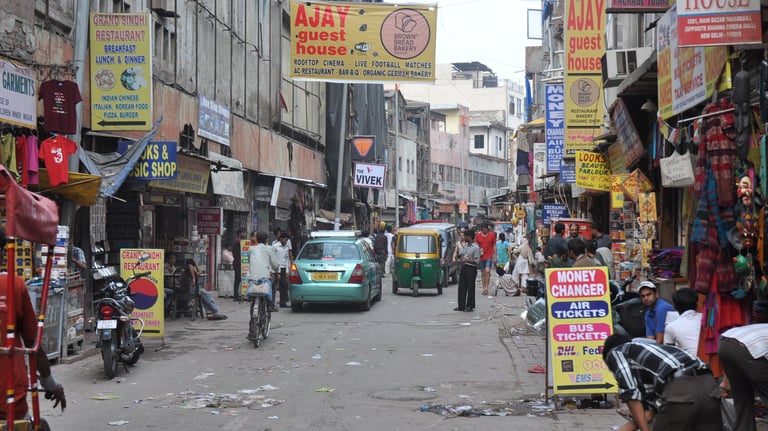



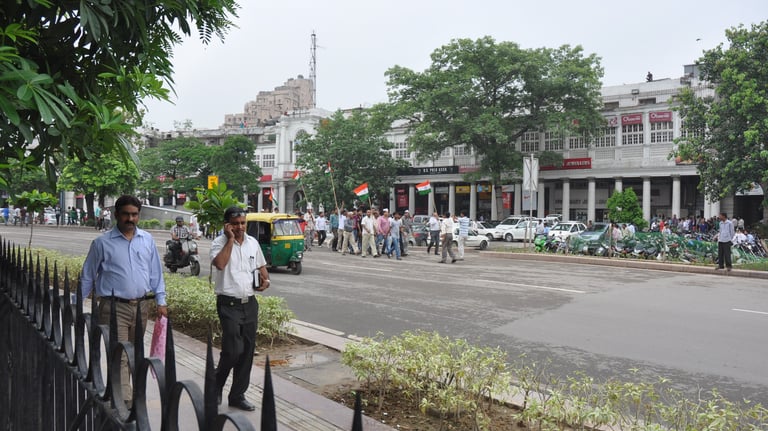

The added benefit of a hotel in The Main Bazar Road area is that you are also quite central to the many interesting places that are to be found in the city. Around three miles from The Main Bazar Road is probably on of Delhi's most iconic structures, India Gate. India Gate is a war memorial, unveiled in 1931 it commemorates the 74,187 soldiers of the Indian Army who died between 1914 and 1921 in both the First World War and also the third Anglo-Afghan war. 13,300 servicemen's names, including some soldiers and officers from the United Kingdom, are inscribed on the gate Designed by Sir Edwin Lutyens. The gate is often compared to the Arc De Triomphe in Paris and the Gateway of India in Mumbai. This area is also has the National War Memorial and is surrounded by wide open streets and government buildings.
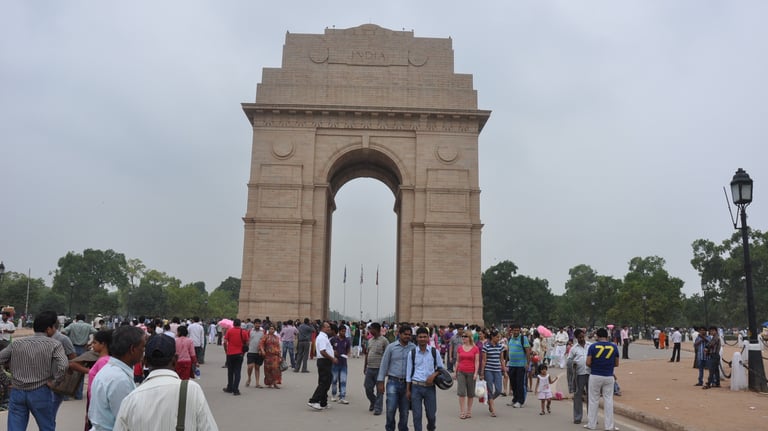


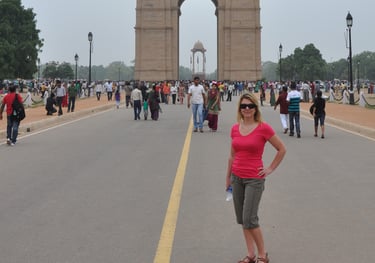
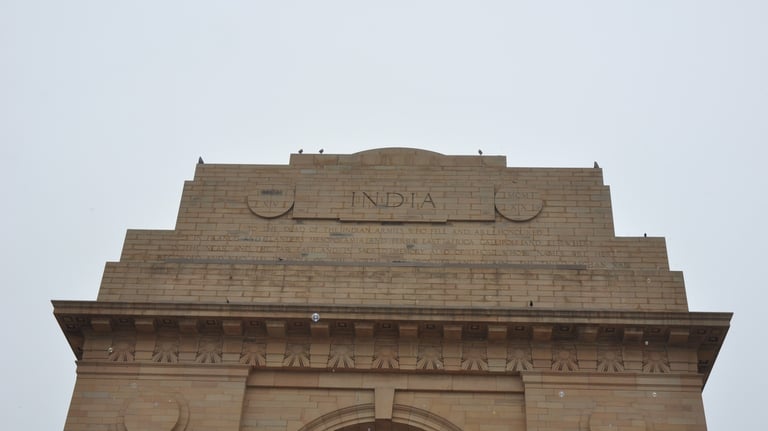

Another worthy place to visit, again only about 3 miles from the Main Bazar Road area is that memorial that marks the spot where Mahatma Gandhi was cremated. Set in lush open parkland a large black marble platform is mounted with lamp that burns an eternal flame to remember the man who is known as the father of all modern India. This is also accompanied by the Mahatma Gandhi museum. Quite a solemn place, but definitely worth the visit
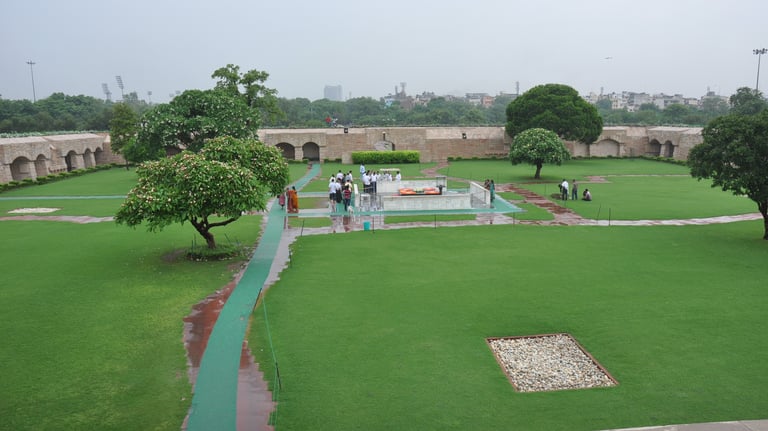

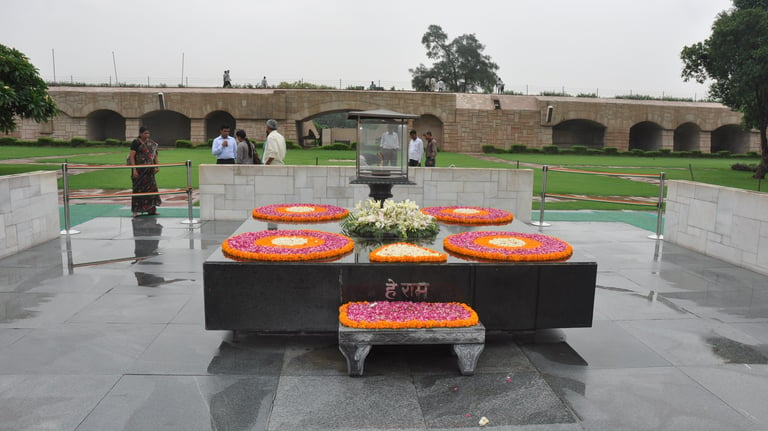

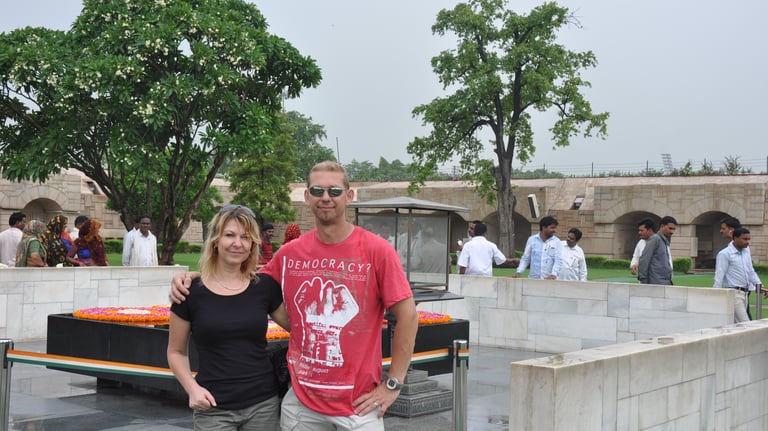

One of the main tourist attractions in Delhi is the Red Fort. Commissioned in 1639, the former home of the Mughal emperors was designed by Ustad Ahmad Lahori, designer of the Taj Mahal and represents the peak of Mughal architecture. Although successive generations have plundered or destroyed parts of the fort its main defensive walls remain surprisingly intact and in 2007 it was designated a Unesco World Heritage Site. The fort is the largest monument in Delhi and visiting this fort gave mixed impressions, although the fort is grand and beautiful, many of the features are in a state of disrepair, with inlay missing or stonework missing, sone areas just locked up and sadly the once majestic water features are all dried up. The fort is just over two miles from the Main Bazar Road area.
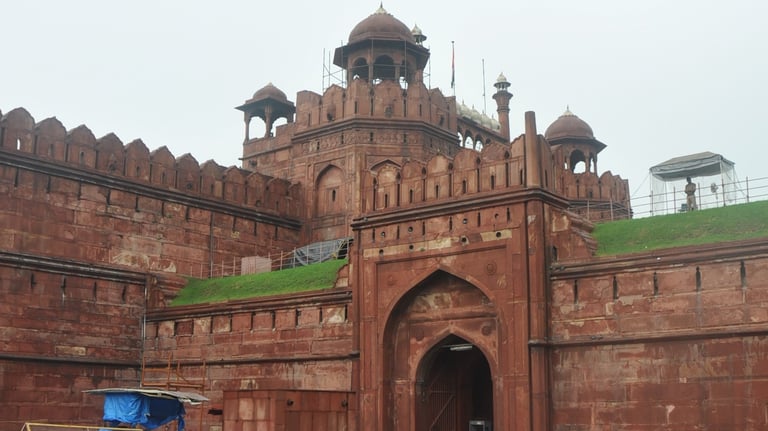

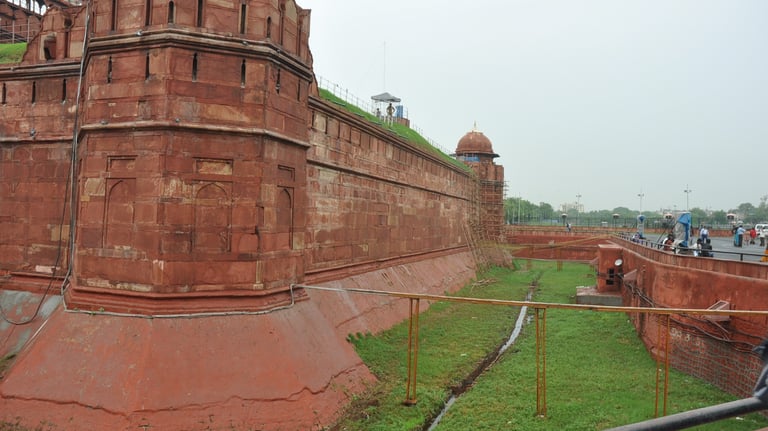


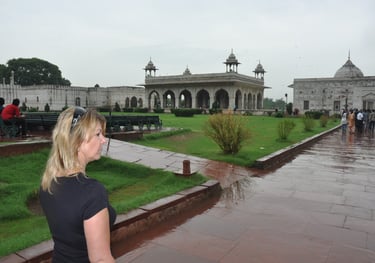
Heading slightly further afield (a short Delhi metro ride) and up into the twentieth century the Lotus temple is a magnificent modern building that has won numerous architectural awards and has been featured in many newspaper and magazine articles around the world. Finished in 1986 it is a Bahá’í House of Worship and like all their other temples is open to all people regardless of their own religion. The building is composed of 27 free-standing marble-clad "petals" arranged in clusters of three to form nine sides, with nine doors opening onto a central hall and a height of just over 34 metres and can hold 1,300 people at any one time. Depending on your time of arrival you may have to queue to get inside as the temple is it is another of Delhi's most popular tourist spot and has been reported to be "the most visited buildingin the world" with annual visits ranging somewhere between 2.5 and 5 million visitors! The Lotus Temple is just under 10 miles from the Main Bazar Road.
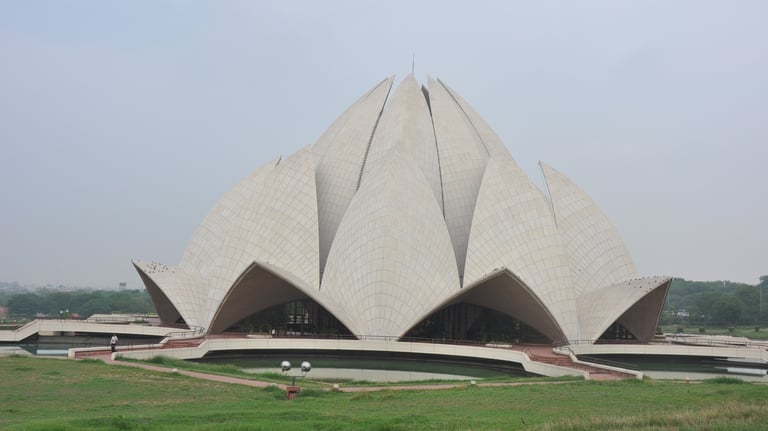

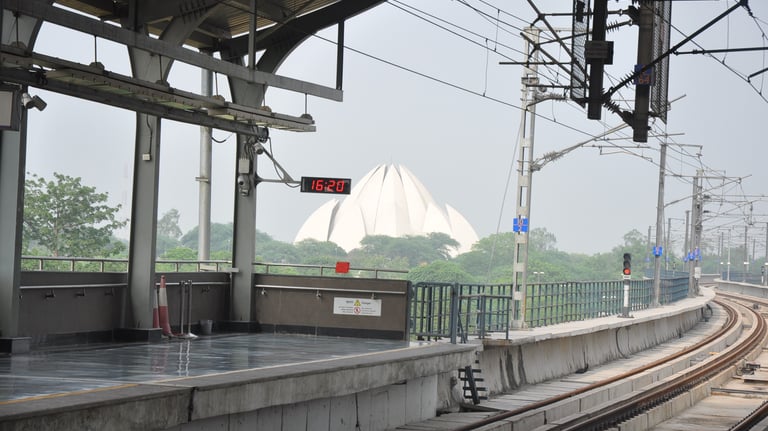


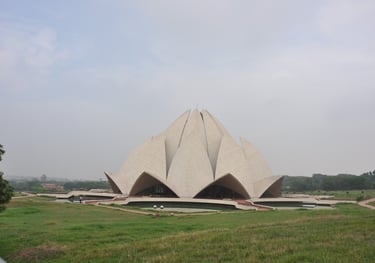
Another great place to go is Humayun’s Tomb, a UNESCO World Heritage site, Its quite close to India Gate so jump on a tuk tuk to get there. Humayun's Tomb is a stunning example of Mughal architecture, built in 1569 as a memorial to Emperor Humayun. Its grand design features a majestic double dome, intricate arches, and beautiful Persian-inspired charbagh gardens. The tomb's architecture influenced later Mughal monuments, including the Taj Mahal. Set within peaceful gardens, it houses Humayun’s tomb along with those of other Mughal royals. The monument has been carefully restored and stands as a symbol of the grandeur of the Mughal era. A perfect blend of history, beauty, and serenity, it’s a must-visit for anyone interested in India’s rich cultural heritag
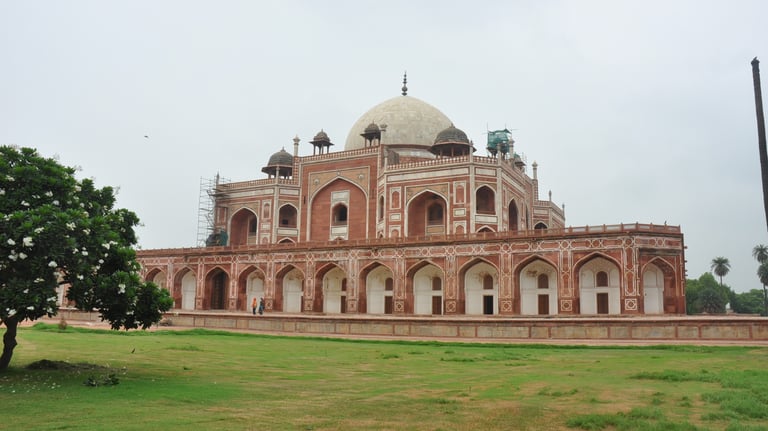

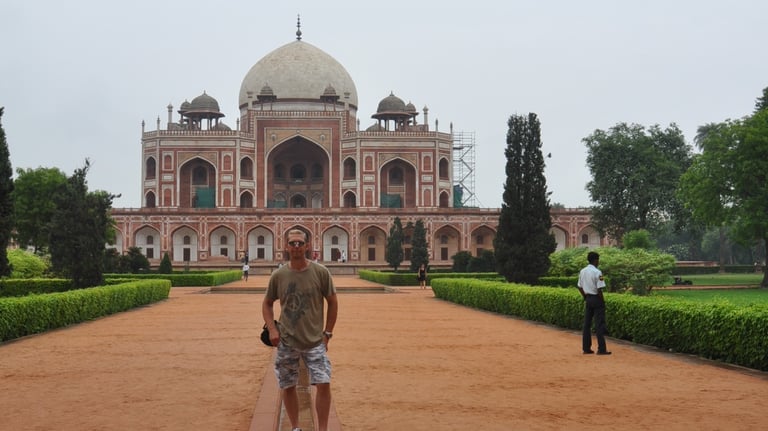

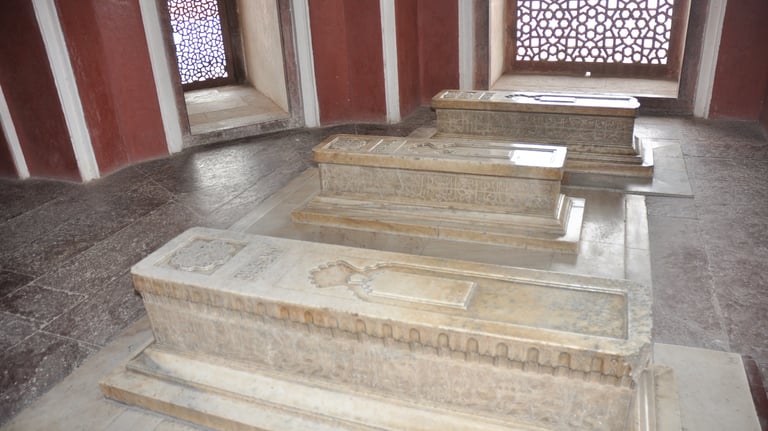

At the opposite end of Kartavya Path to India Gate you will find Rashtrapati Bhavan, the official residence of the President of India. This is a stunning example of British colonial architecture, set on the grand Raisina Hill. Designed by architect Edwin Lutyens, the building features a blend of Mughal and Western styles, with its massive dome, lush gardens, and impressive courtyards. The expansive estate includes the Mughal Gardens, which are open to the public during certain times of the year. As the symbol of India’s presidential authority, Rashtrapati Bhavan offers a glimpse into the country’s political grandeur and rich heritage. Visitors can tour parts of the building and its surroundings, making it another must-see for anyone exploring New Delhi.

